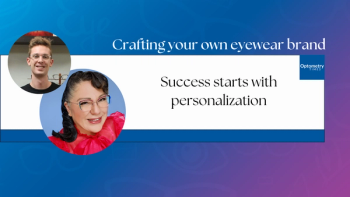
Contact lens patients and successful practice
ring the Contact Lens Global Forum, a partnership between Vision Expo East and the British Contact Lens Association, David Kading, OD, FAAO, Shelly Bansal, FBDO, Hons CL, FBCLA, and John Rumpakis, OD, MBA, explained why not making the most of your contact lens business means risking drop outs and losing money.
New York City- During the Contact Lens Global Forum, a partnership between
“I want you to realize that the contact lens patient is far more valuable to you than you ever realized,” says Dr. Rumpakis. He says that the average contact lens patient spends $275 per year, which he considers a conservative figure, but these patients drop out at a rate of 16% per year.
Dr. Rumpakis says doctors often:
• Believe that drop outs don’t have a major impact on their practice
• Believe it is their staff’s responsibility
• Believe that some discomfort with contact lenses is normal
• Believe that patients can’t afford the new technology
• Underestimate the role lens care plays in contact lens discomfort
• Passively recommend-instead of actively recommend-to patients
• Don’t effectively communicate the importance of recommendations
• Focus on the “what” rather than the “why” in patient communications
“If we are ambassadors for contact lens technology, we can see more and more patients entering the contact lens arena as time goes on,” says Dr. Kading. “We bring value to our contact lens business in the services that we provide. Our patients do not know the contact lens options that are available to them until we bring it up.”
Dr. Bansal recommended examining your in-store communications regarding contact lenses. Do you have displays advertising the lenses you offer? Are you and your staff mentioning these lenses to your patients? To keep these patients in contact lenses and in your practice, high quality service, communication, and product performance are critical.
Dr. Bansal also recommended using a direct debit system, allowing your patients to pay for their lenses on a monthly basis.
Newsletter
Want more insights like this? Subscribe to Optometry Times and get clinical pearls and practice tips delivered straight to your inbox.
















































.png)


